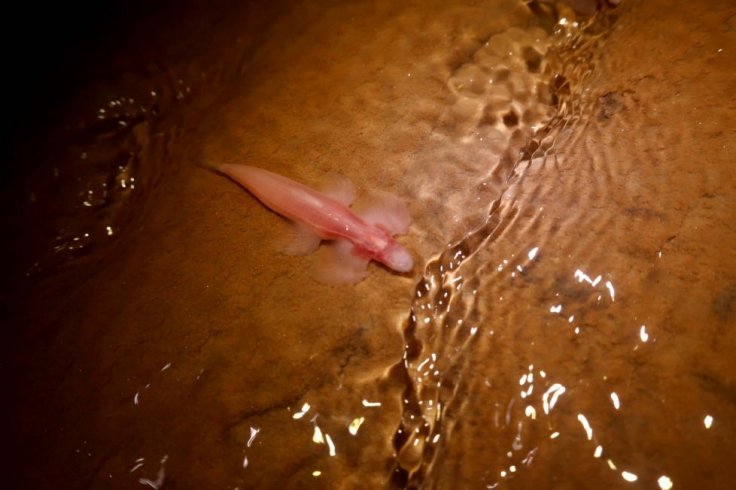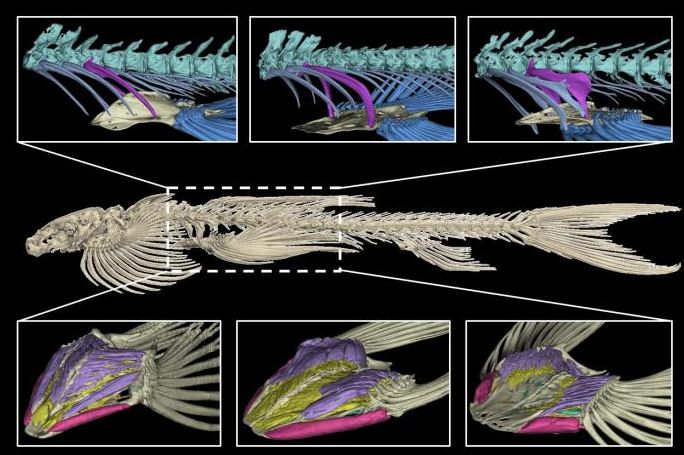The question of how sea-dwelling creatures came to inhabit land has fascinated researchers for centuries. Now, in a new study, researchers have discovered at least 11 species of fish that are suspected to be endowed with the ability to walk on land. The findings can help scientists solve the evolutionary puzzle of how the earliest land-walking vertebrates may have evolved.
In a multi-university study, scientists examined numerous species of fishes belonging to the family of hillstream loaches or river loaches that are found in East, South and Southeast Asia. Incidentally, the family consists of a rare cave-dwelling fish known as 'the cave angel fish' or Cryptotora thamicola, which is the only living fish seen walking. The authors analyzed CT scans of their skeletal structures and DNA, and found that several of them can walk on land, much like the cave angel fish.

Explaining the uniqueness of the method, Zachary Randall, co-author of the study said, "The beauty of CT scanning is that you can capture different types of high-resolution data without compromising the integrity of the specimen. For rare species like this one, it even allows you to capture things that are hard to observe in the field, even what it eats."
Finding More Species of Fishes that Can Walk
As mentioned earlier, the cave angel fish is the only species whose ability to walk has been captured and studied. Not all species of hillstream loaches—nearly 100—were known to have the same ability. In 2016, for the very first time, the salamander-like wiggle of the cave angel fish which is aided by enlarged ribs and supported by stabilizing muscle attachments was described.

For the current study, the scientists observed 30 species of hillstream loaches. Upon studying the shape of the bones that joins the spines of some of the loaches to their pelvic fins, the team discovered 10 more species shared the same robust pelvic girdle or region as the cave angel fish.
"Fishes don't usually have any connection between their spine and pelvic fin," said Randall. Talking about the new findings, he explained, "Before, the idea was that the cave angel fish was totally unique. What's really cool about this paper is that it shows with high detail that robust pelvic girdles are more common than we thought in the hillstream loach family."

Adapting to Survive
According to Randall, the ability to walk is the cave angel fish's crucial adaptation to survive in the fast-flowing cave streams. It gives them the means to grip the rocky bed of streams and traverse between different habitats. This includes even up waterfalls, owing to the fluctuating levels of water during the dry season.
Such increased levels of mobility may enable the fish to reach better-oxygenated regions in the stream where there are little or no inhabitants. This adaptation is suspected to help the other 10 species as well.

Callie Crawford, lead author of the study, said, "These loaches have converged on a structural requirement to support terrestrial walking not seen in other fishes. The relationships among these fishes suggest that the ability to adapt to fast-flowing rivers may be what was passed on genetically, rather than a set of specific physical characteristics."
Also, while the cave angel fish was first described in 1988, this is the first time that it has been included in the hillstream loach family tree. Randall said that through the inputs from researchers in Thailand, the team was able to employ hundreds of genes to trace the evolution of pelvic shapes of these fishes over time.
Thus, there is an accurate genetic tree now that provides a framework for knowing the number of species that may have the ability to walk and to what extent.









